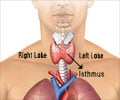According to a study, infants fed from plastic bottles are found to have the highest estimated levels of Bisphenol A (BPA), with exposures falling with rising age.
According to a study, infants fed from plastic bottles are found to have the highest estimated levels of Bisphenol A (BPA), with exposures falling with rising age.
The findings are important because BPA is thought to impact human development and is classified as an endocrine disrupting chemical, potentially putting developing infants at risk, as well as fetuses if pregnant mothers are exposed.The Swiss study examines 17 different sources of potential exposure across nine age/gender groups in the German/Swiss/Austrian population and found the most potentially exposed group is bottle-fed infants from 0-6 months of age.
The group had estimated mean dose rates of nearly 0.8 micrograms per kilogram body weight per day, well below the TDI.
However "it is of the same order of magnitude as recently reported concentrations that caused low-dose health effects in rodents," according to the authors.
"In general humans in their developmental stages (fetus, infant, child) seem to be exposed more severely than adults," wrote author Dr. Natalie von Goetz, senior scientist at the Swiss Federal Institute of Technology in Zurich.
Drawing on studies of how polycarbonate bottles and containers tend to leach more chemicals the more they are heated, the study determines from these and other research the main source of BPA for all consumer groups is food, although some is found in ambient air, drinking water from pipes sealed with epoxy, and as a result of dental surgery, among other sources.
Advertisement
Researchers also concluded that additional research needed on production processes for canned soup, canned meat.
Advertisement
Source-ANI
TRI













